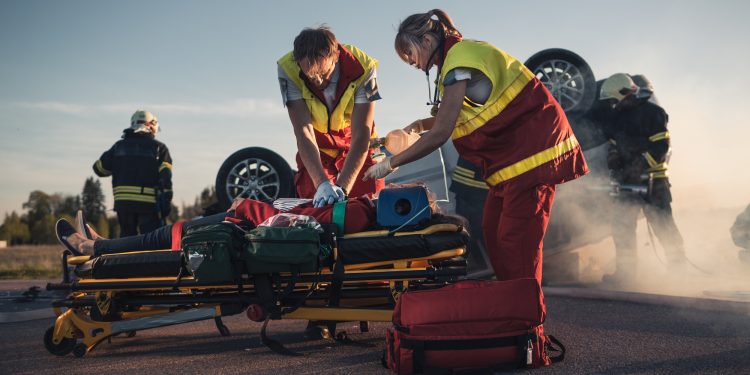Emergency Medical Services (EMS) are critical in providing immediate medical care in times of crisis. Innovations in this field have greatly enhanced the ability to respond swiftly and efficiently, saving countless lives. These advancements cover a broad spectrum, from cutting-edge technology to improved protocols and training. As emergencies become more complex, the evolution of EMS has become vital for ensuring the best possible outcomes.
One significant development in this area is the deployment of field hospitals during large-scale emergencies or disasters. These mobile units provide essential medical care, bridging the gap until patients reach a permanent hospital facility. They stand as a testament to the agility and adaptability of modern EMS.
Read on to explore how these and other innovations reshape emergency medical services, enhancing their impact and efficiency across various scenarios.
Table of Contents
1. Technological Advances In Emergency Medical Services
New technologies are changing how emergency medical services are provided. Each innovation improves the ability to save lives quickly and effectively. This progress shows a commitment to excellence and always aiming for better results for patients in crisis.
For those keen on understanding the impact of these advancements, the following highlights are essential:
- Portable monitoring devices: These devices have revolutionized the EMS landscape by enabling comprehensive diagnostics directly at the scene. This capability means that paramedics can quickly assess a patient’s condition and make informed decisions about their care without delay.
- Telemedicine: Telemedicine technology bridges the gap between the field and the hospital by enabling real-time video consultations with specialists. As a result, the quality of pre-hospital care has significantly improved, with patients receiving expert advice even before they arrive at the hospital.
- Electronic patient records: By facilitating the seamless transfer of patient data between ambulance services and hospitals, these systems ensure no lapse in the continuity of care. This integration has streamlined the patient handover process, making it smoother and more efficient.
The use of new technology in EMS has improved patients and changed how emergency medical care is given. These advances are a big step toward providing top-notch care in challenging situations.

2. Training and Education Enhancements
Continuous training and education are crucial in the constantly changing emergency medical services field. This ensures EMS personnel can effectively handle emergencies and use the latest medical advancements to save lives.
To highlight these pivotal changes, consider the following advancements:
- Simulation-based training: This method employs realistic emergency scenarios, allowing personnel to practice and refine their skills in a risk-free environment. It’s a hands-on approach that simulates real-world emergencies, from car accidents to cardiac arrests, enhancing decision-making skills under pressure.
- Continuing education platforms: With the advent of online learning tools, EMS professionals have access to a wealth of knowledge at their fingertips. These platforms offer courses on the latest medical protocols, technology use, and patient care strategies, ensuring that EMS staff constantly learn and grow.
- Specialized certification programs: Catering to the diverse nature of emergencies, these programs provide in-depth training in specific fields such as wilderness EMS, tactical medicine, and disaster response. This specialization enables responders to tackle unique challenges with confidence and expertise.
Through these enhanced training and education initiatives, EMS personnel are better prepared than ever to face the complexities of emergency medical care. This commitment to excellence ensures that the EMS community remains at the cutting edge of medical response, ready to serve and save lives with unmatched proficiency and dedication.
3. Improvement In Response Coordination
In the critical moments of emergency response, the ability to coordinate swiftly and efficiently can mean the difference between life and death. The recent strides in enhancing response coordination within emergency medical services underscore this principle.
Highlighting these innovations, here’s how they contribute to a more effective emergency response:
- Integrated communication systems: These systems have revolutionized how emergency services communicate, breaking down barriers between different agencies. By using unified platforms, EMS, fire departments, and police can share information instantly, leading to a more synchronized response effort.
- GPS and mapping technology: This technology has been a game-changer in reducing response times. Responders can quickly reach victims by providing precise incident locations and the fastest routes. Furthermore, it helps allocate resources more efficiently, ensuring that help is directed where it’s most needed.
- Disaster response protocols: The development and standardization of disaster response protocols have fortified the collective response to large-scale emergencies. These guidelines outline specific roles and procedures, ensuring that all responding entities are aligned in their efforts, thereby maximizing the effectiveness of the response.
These response coordination enhancements bolster emergency services’ operational capacity and significantly impact the outcomes of those in need. By fostering a more integrated, swift, and informed response, emergency medical services can continue to rise to the challenge of saving lives in the face of disasters.
Conclusion
The latest innovations in Emergency Medical Services show ongoing progress and commitment. EMS has transformed from portable monitoring devices to improved training and coordination, boosting patient care and response efficiency. These advancements demonstrate a dedication to meeting present needs and preparing for the future, making EMS vital and adaptable in healthcare.


 Home
Home










